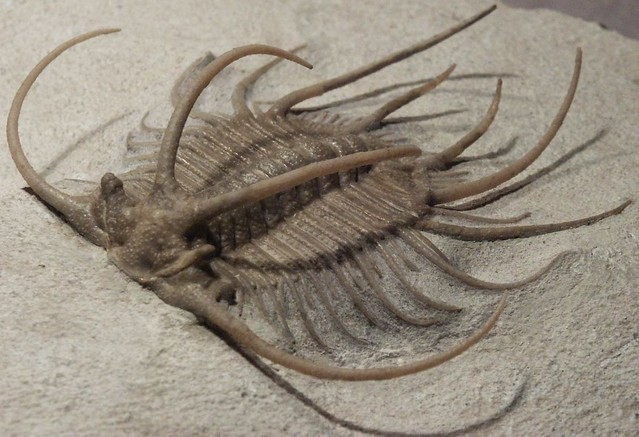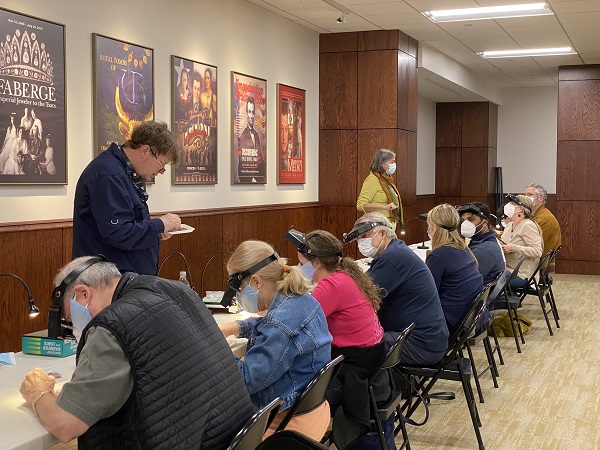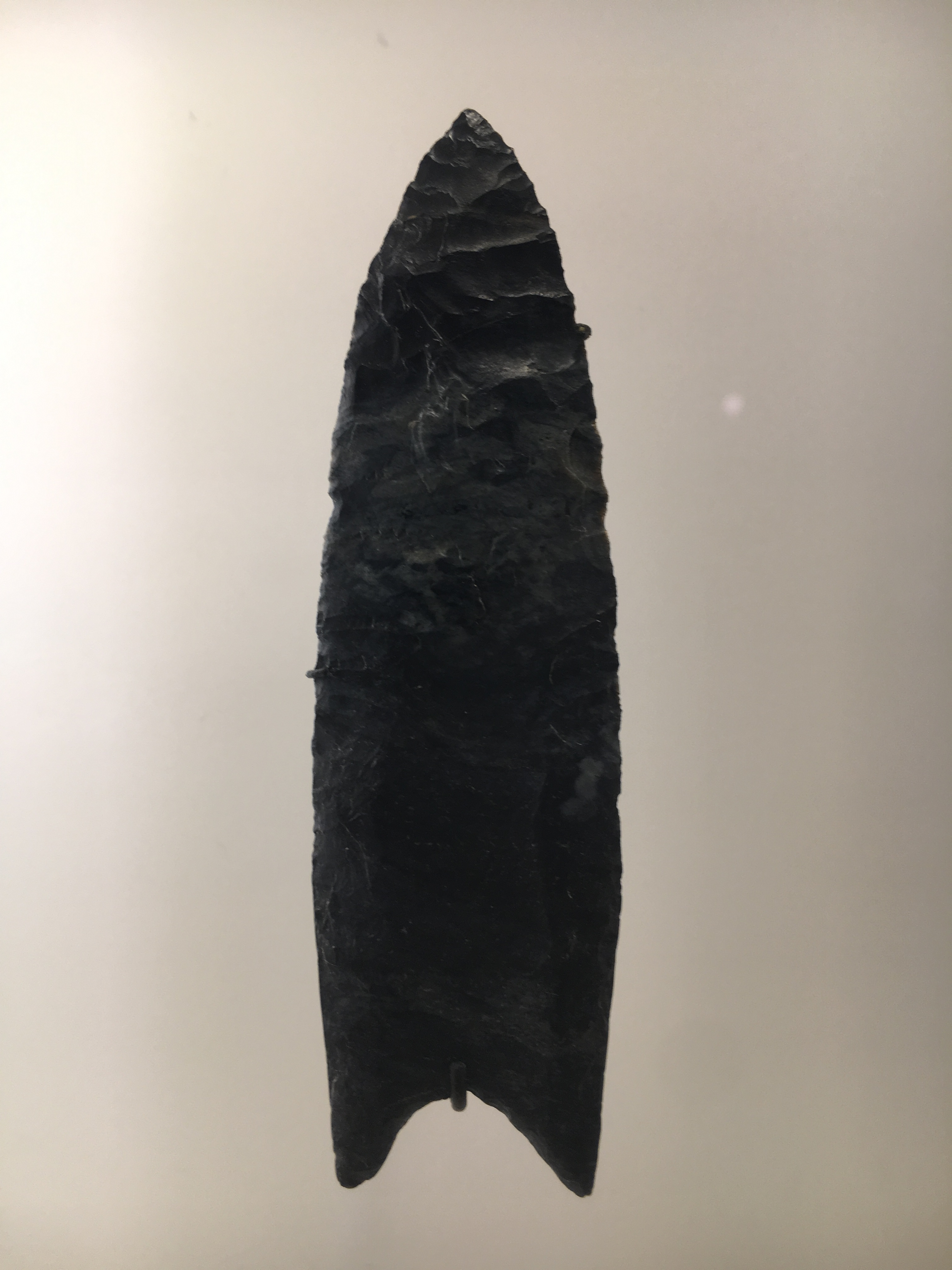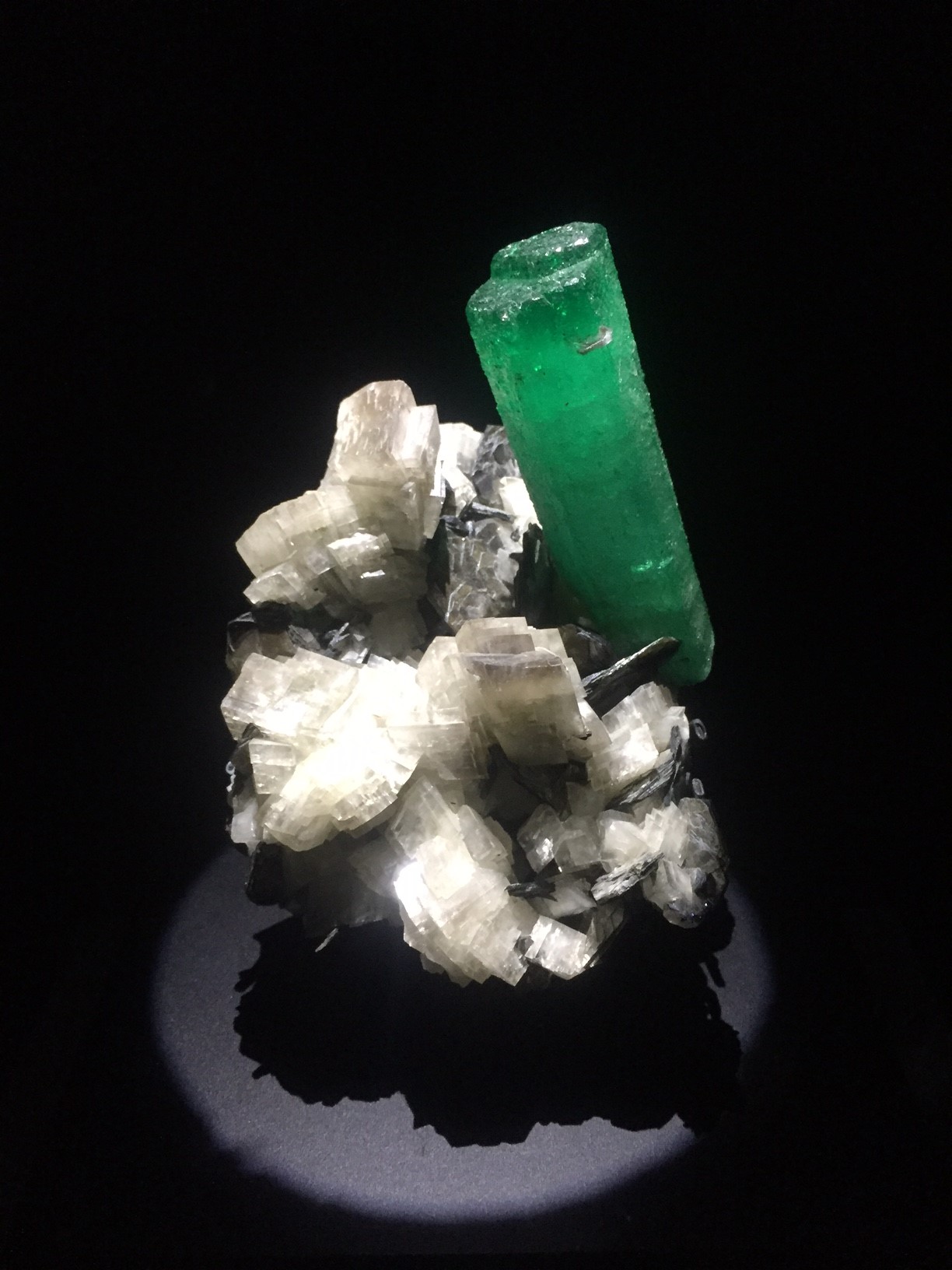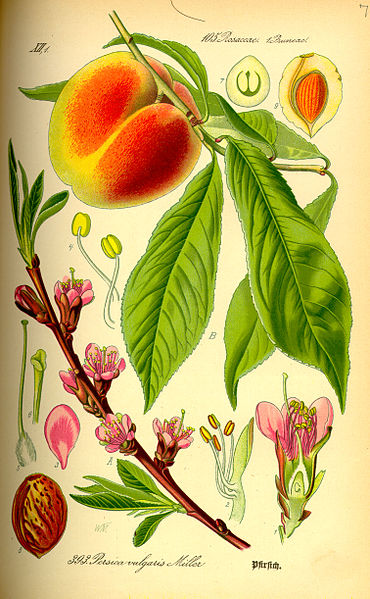Editor’s Note: This blog comes to us courtesy of longtime volunteer John Moffitt.
I lead tours through the new HMNS Paleo Hall and spend a lot of time in the Paleozoic. Sometimes this ties in with a class on trilobites. During these tours, I answer a lot of questions like, “What is a trilobite, anyway?”
But a favorite question has always been, “What is the best trilobite in the collection?” The question may be worded differently or be slightly more specific, but an array of related questions always comes up:
• What is the rarest trilobite?
• What is the most scientifically significant trilobite?
• What is your favorite trilobite?
• Which trilobite is the most valuable?
The answers to these and similar questions are often different, and sometimes involve a process of further qualifying the question. To some degree, many of these questions involve personal opinion. For this article, I am going to put the question in terms of my own personal favorite trilobite with no further qualification required. Quite convenient!
I will pretend that I have done something so significant that the museum gives me a one-chance opportunity to walk through the entire trilobite collection, pick one out and take it home to live with me.
Once I’ve selected my favorite, I’ll tell you where to look for my favorite trilobite, a few things about where it was collected, and maybe even a few suggestions on how the museum might improve the overall display.
It will come as no surprise to anybody that knows me that I would select an odontopleurid trilobite, since I often wear one on my hat and my favorite trilobite graphics are nearly always odontopleurids. I am also known to have a special love for Oklahoma Devonian odontopleurids from the Arbuckle Mountains. For this exercise, I will pick an Ordovician odontopleurid, the enrolled Boedaspis ensifer located on your left shortly after entering the Paleozoic part of the museum exhibit.
While Boedaspis ensifer is a very rare Ordovician trilobite, a number of good specimens have been collected over the last 60 years. It wasn’t described until 1960, and even then only from trilobite fragments. Two of the very best complete specimens of Boedaspis ensifer that have ever been collected are in the museum in the current display. Both of these trilobites were donated from the Sam Stubbs collection.
In my opinion, this enrolled specimen of Boedaspis ensifer is the absolute best trilobite in the museum’s collection.
Family: Odontopleuridae BURMEISTER 1843
Genus: Genus Boedaspis WHITTINGTON & BOHLIN 1960
Species: Boedaspis ensifer WHITTINGTON & BOHLIN 1960
My reasons include — but are not limited to — the following:
• This is a rare trilobite in any condition
• This is one of the more interesting positions to find an odontopleurid
• This is one of the best preparations of any trilobite that I’ve ever seen
• This is one of the most beautiful and spectacular fully prepared trilobites that I’ve ever laid eyes on
This is a map of where most of the museum’s trilobites are displayed:
Using a map of the trilobite section of the hall, you can find my favorite trilobite on Wall C. But you would first need to pass by an outstretched specimen of the exact same species located across the walkway on Wall B, mixed in with some Devonian trilobites. The specimen of Boedaspis ensifer on Wall C was selected mostly because of the position it died and was permanently preserved in, inside mud that finally became rock, and because of the extraordinary preparation used to remove that rock.
Other views of the enrolled specimen Boedaspis ensifer help illustrate why this is — for my money — The Best Trilobite.
A slow turn from the rear position reveals the full richness of this trilobite. The outstretched specimen of that same species is shown here:
Both of these trilobites were collected from the Lower Ordovician Putilovo Quarry and the Kunda Herizont Formation, over 100 kilometers east of St Petersburg, Russia. Notice Putilovo down the M-18 freeway on the right side of this Russian map.
The entire length of this Ordovician shelf is an excellent collecting location for the entire Ordovician geological sequence. The Houston museum collection currently has 20 Ordovician trilobites on display that were collected from this region.
There are a lot of rarer, more important, and more valuable trilobites in the museum’s collection. You have to visit more than once to fully appreciate the many dimensions of this collection of extinct arthropods. Museum members get a free chance to visit the paleo hall as often as they choose, and there is always a FREE afternoon on Thursdays for those who are not museum members. Sam Stubbs has donated many of the trilobite specimens that you will see in this collection, and many of these are the best in the world for that species.
Continue your education at our hands-on Adult Education class this Tuesday, August 6 at 6 p.m. For more information or to reserve tickets online, click here.





